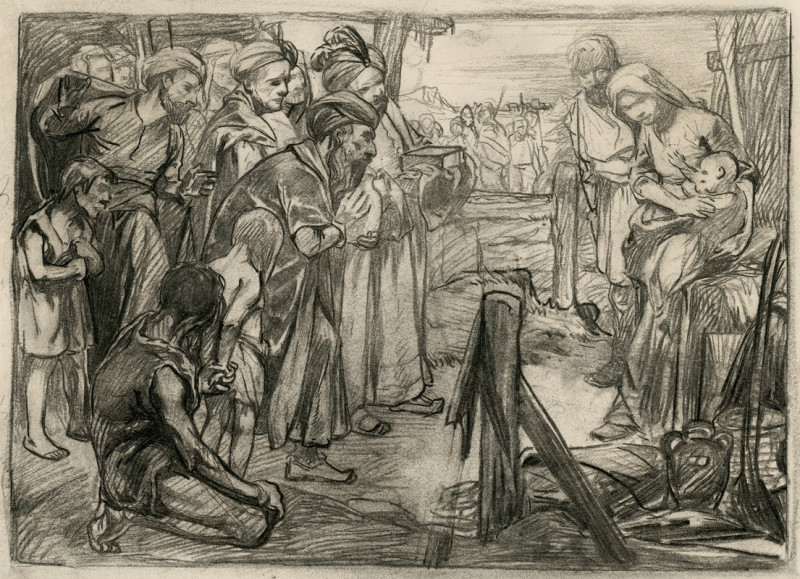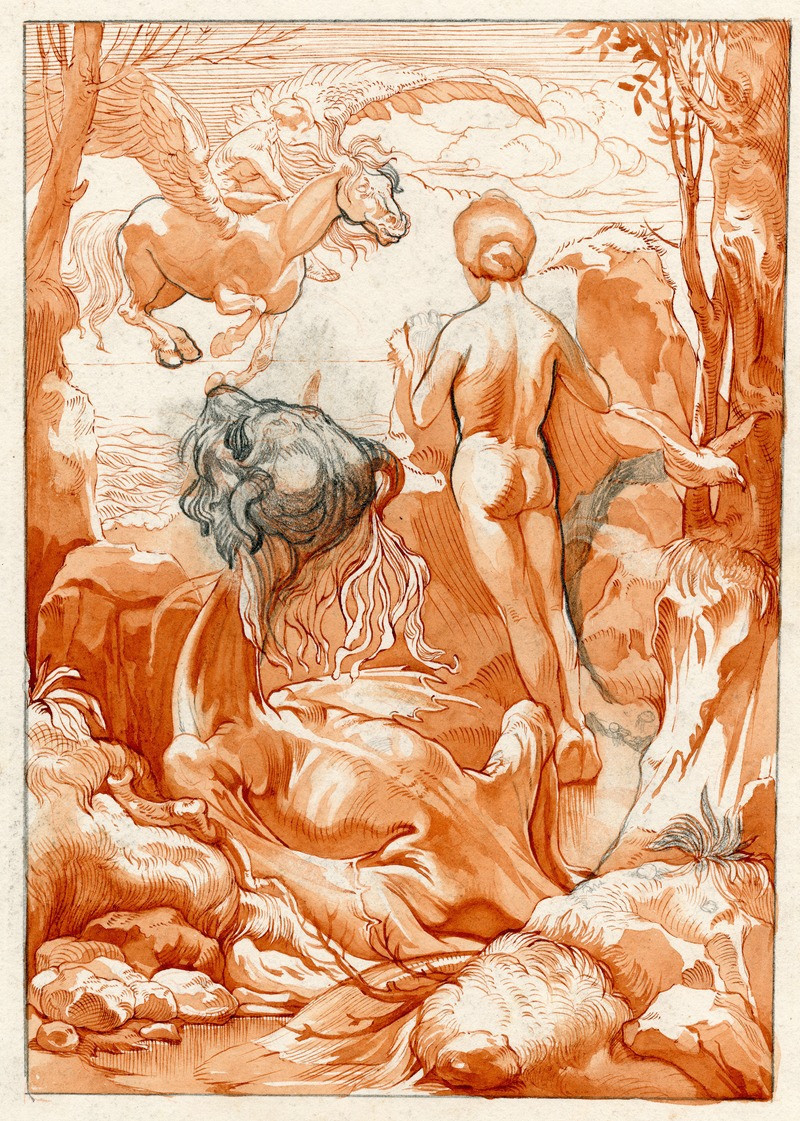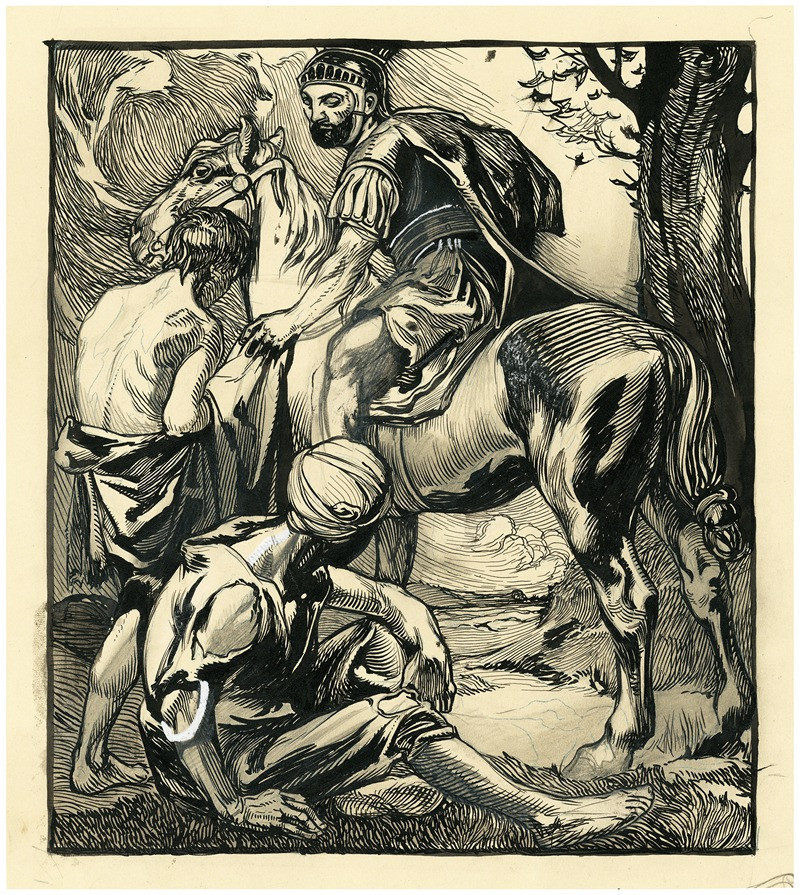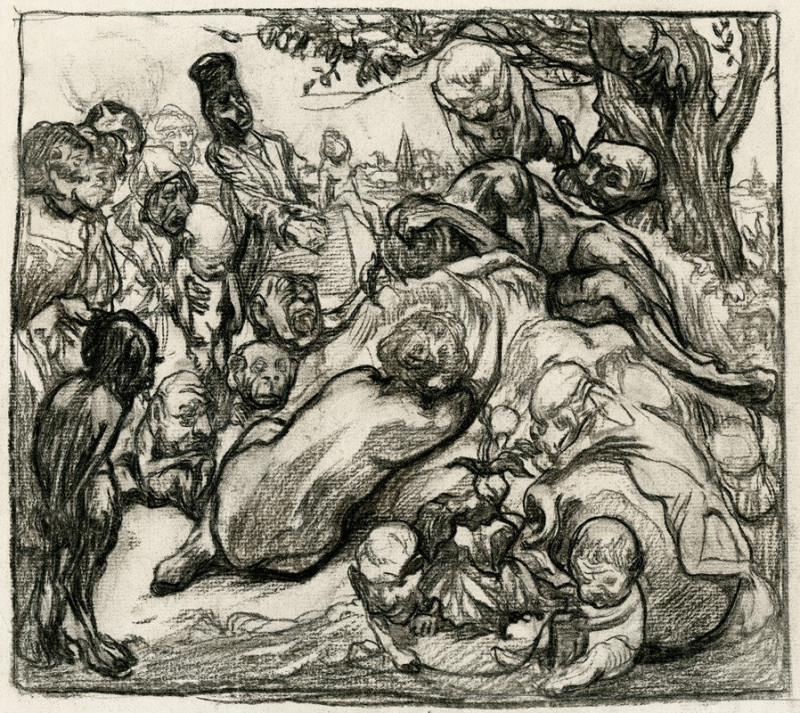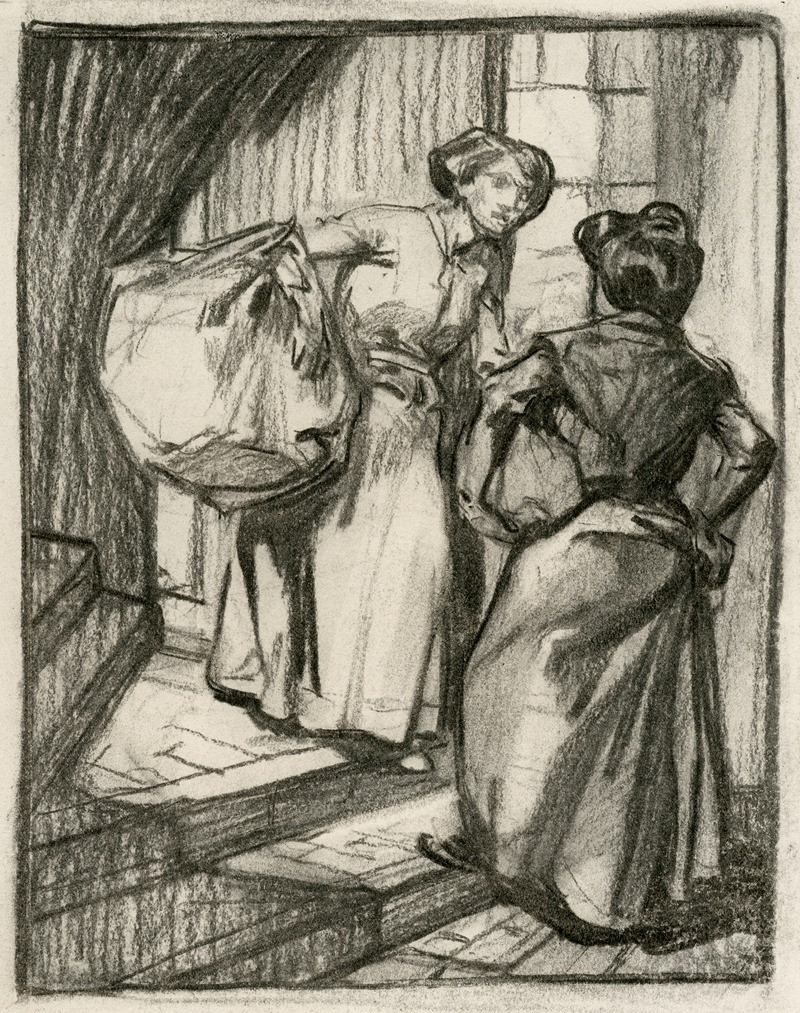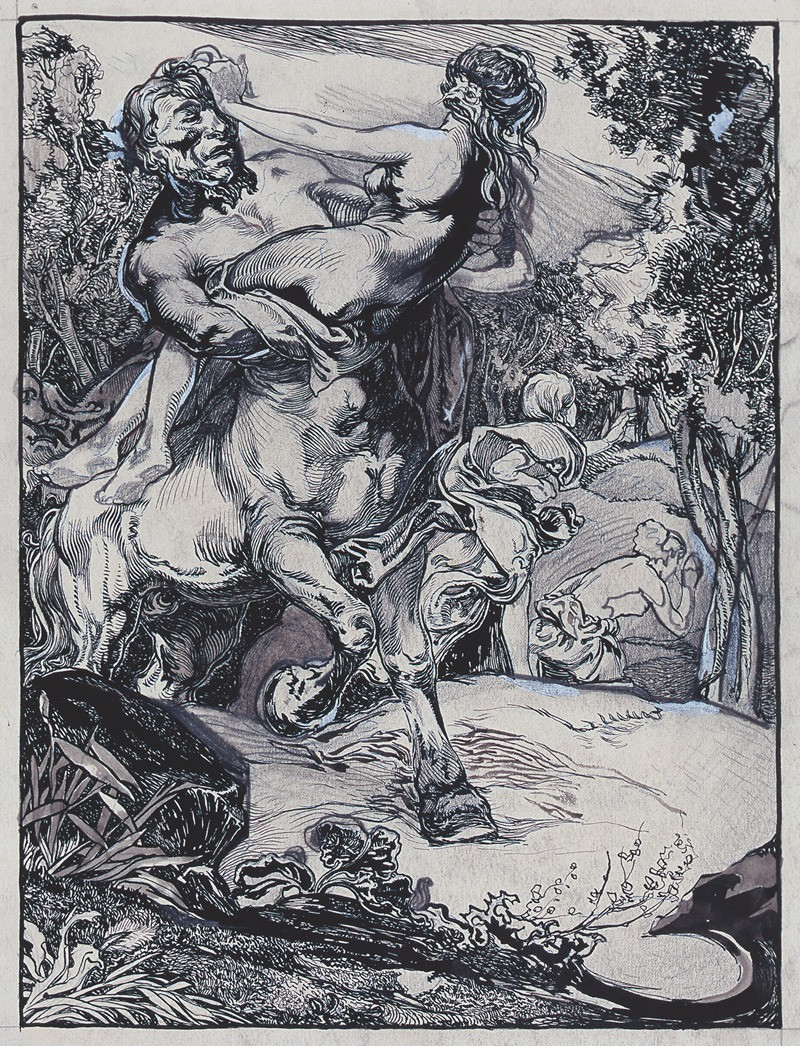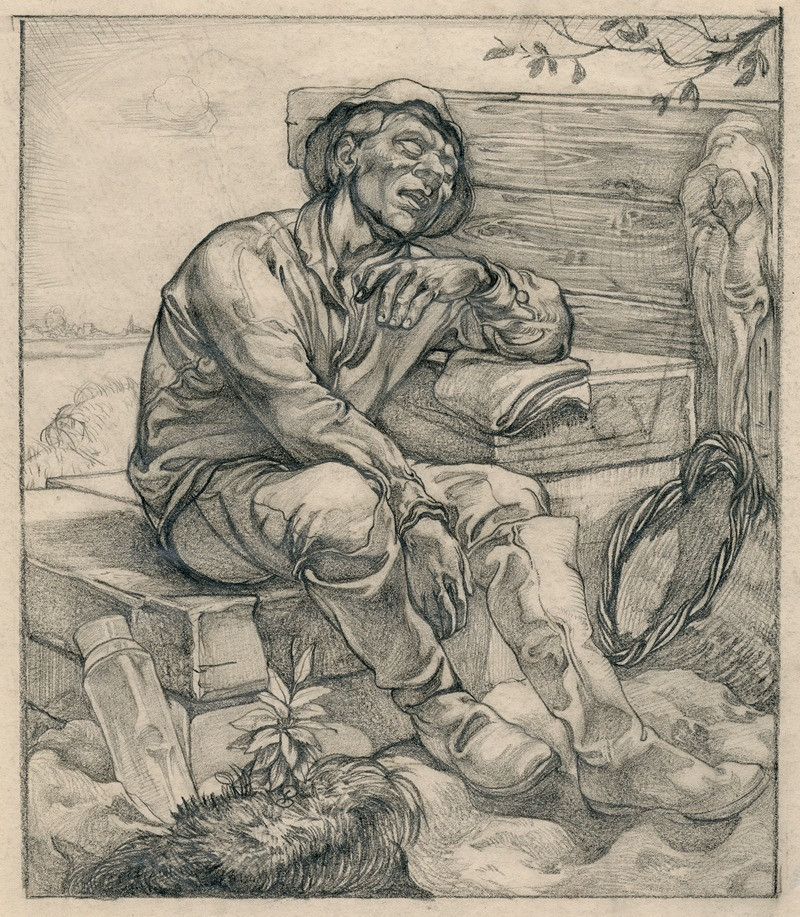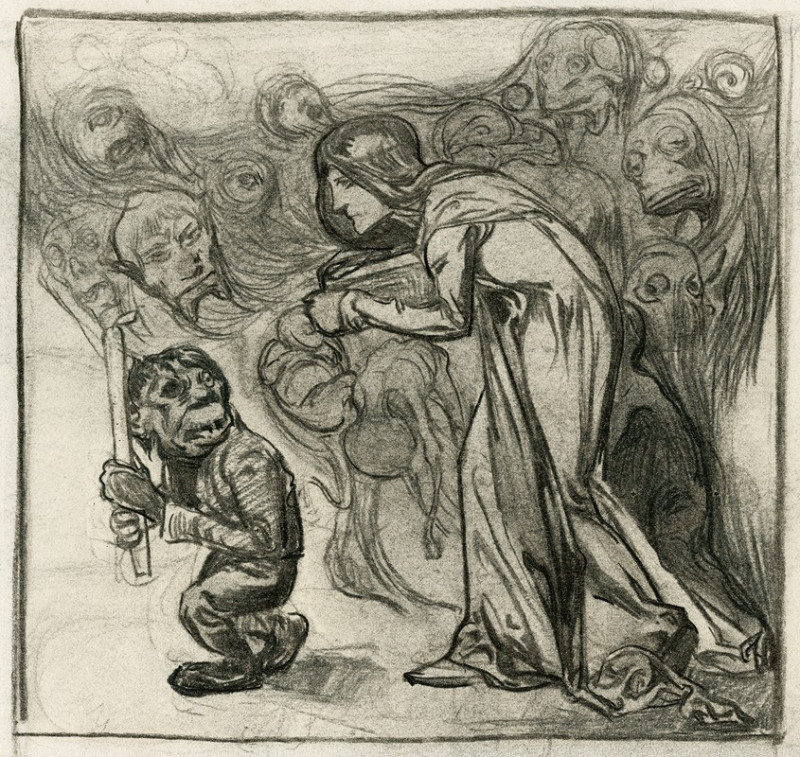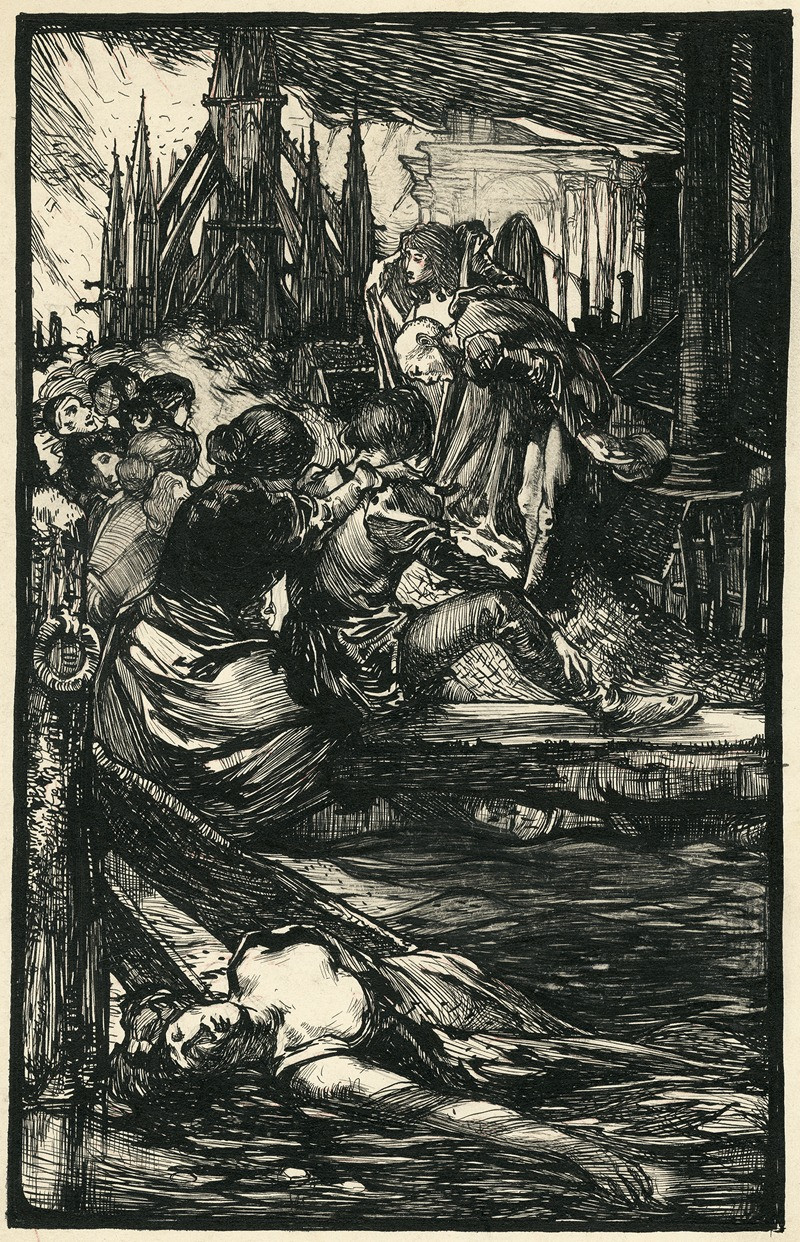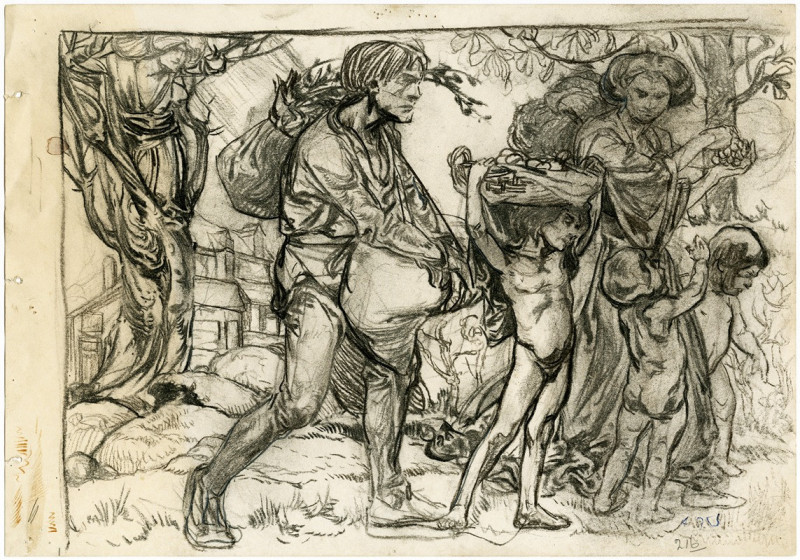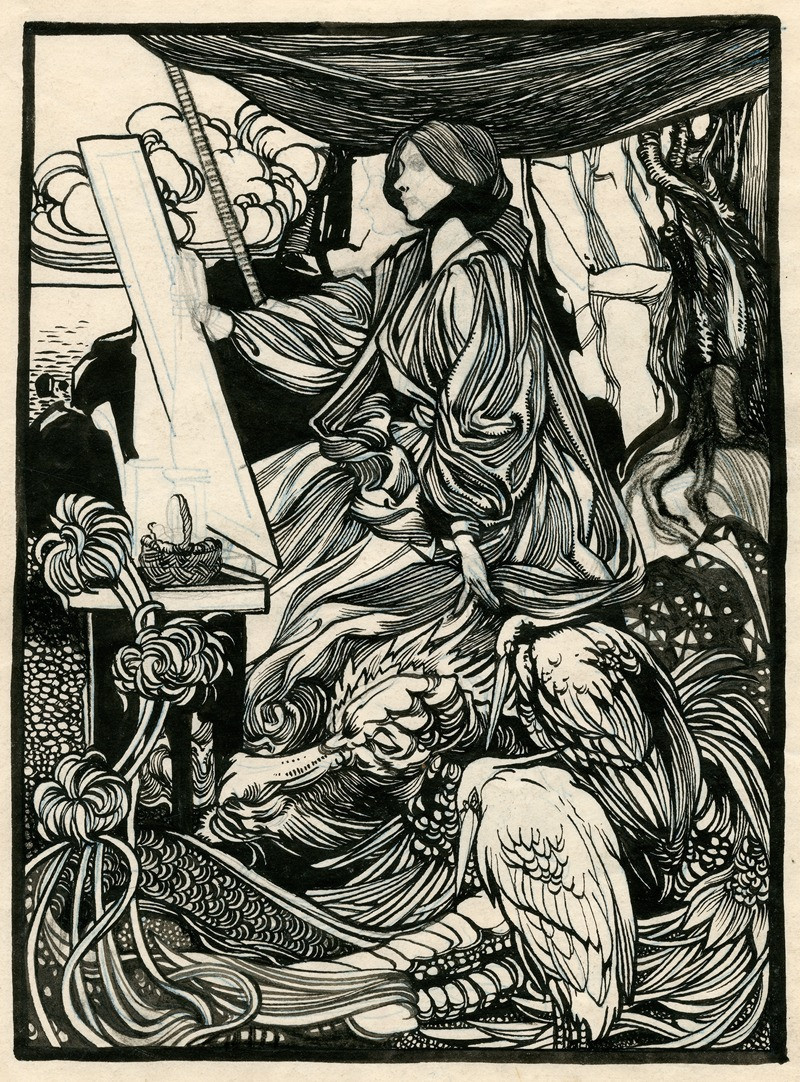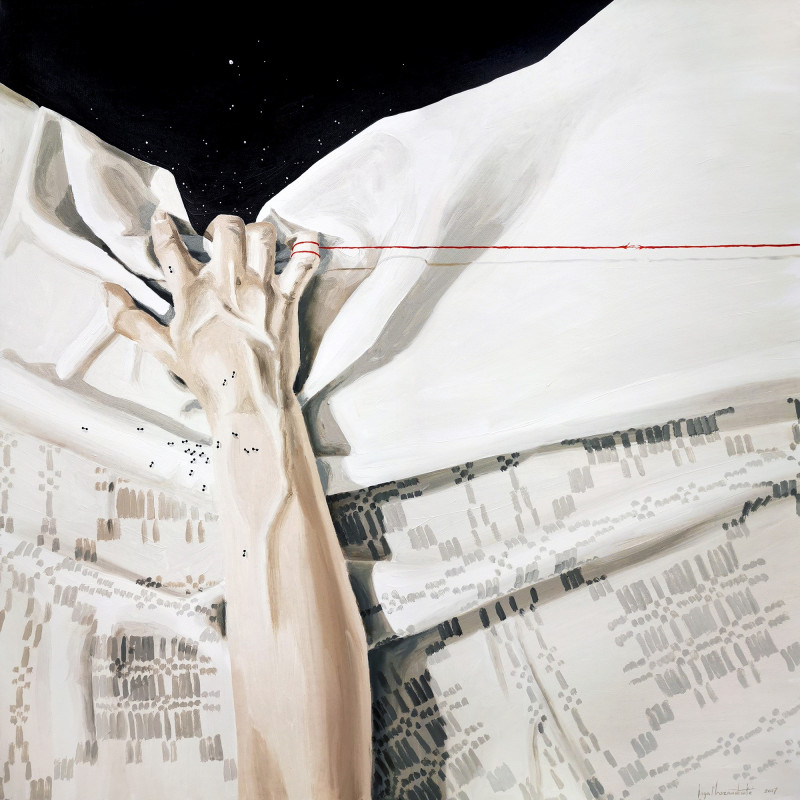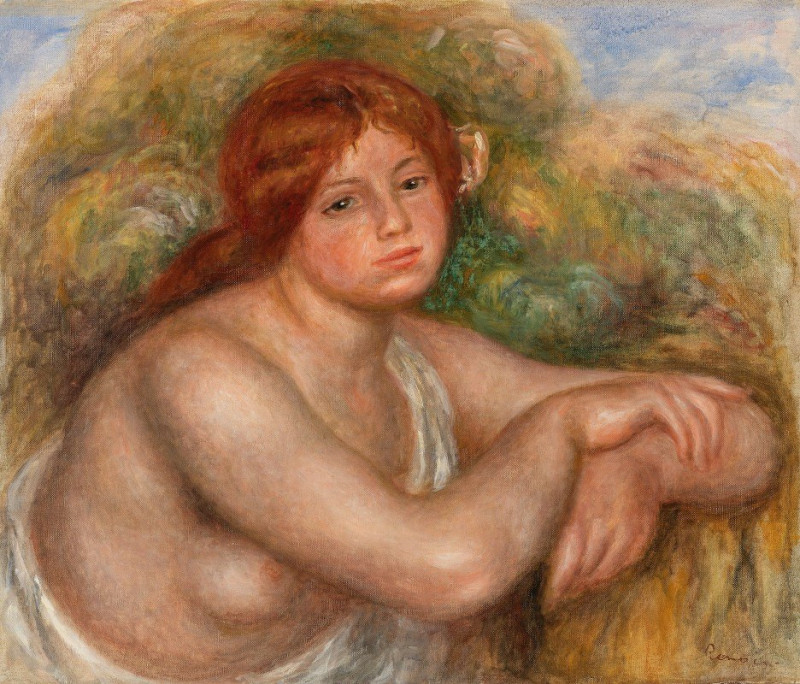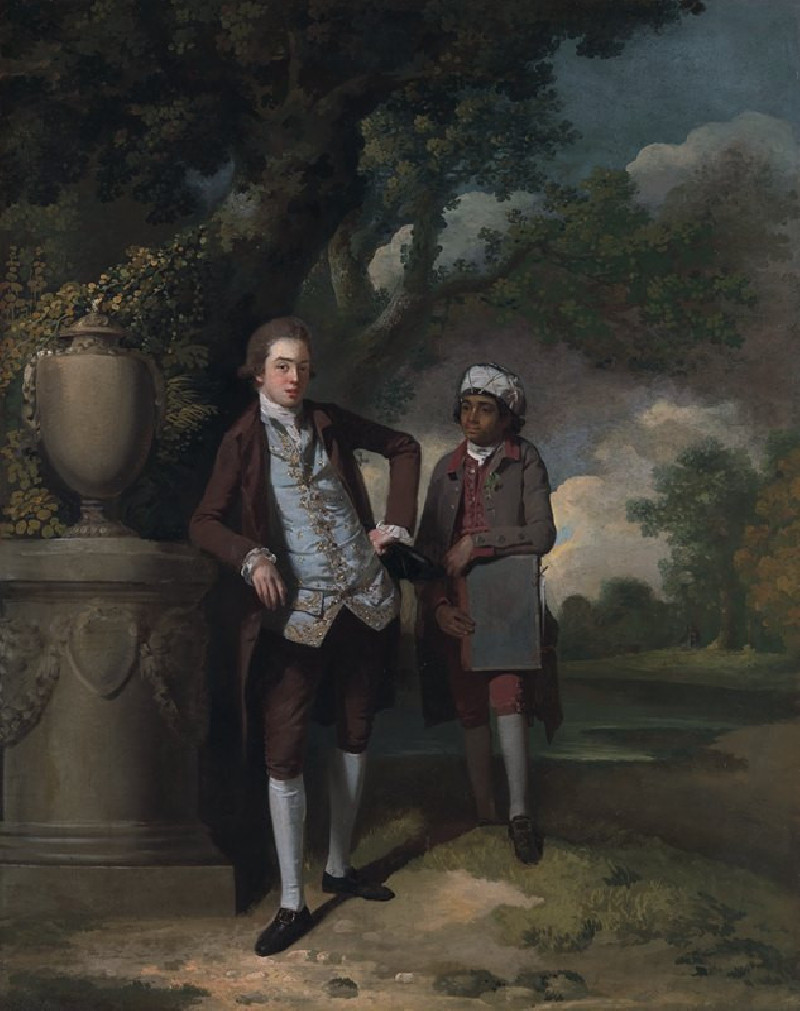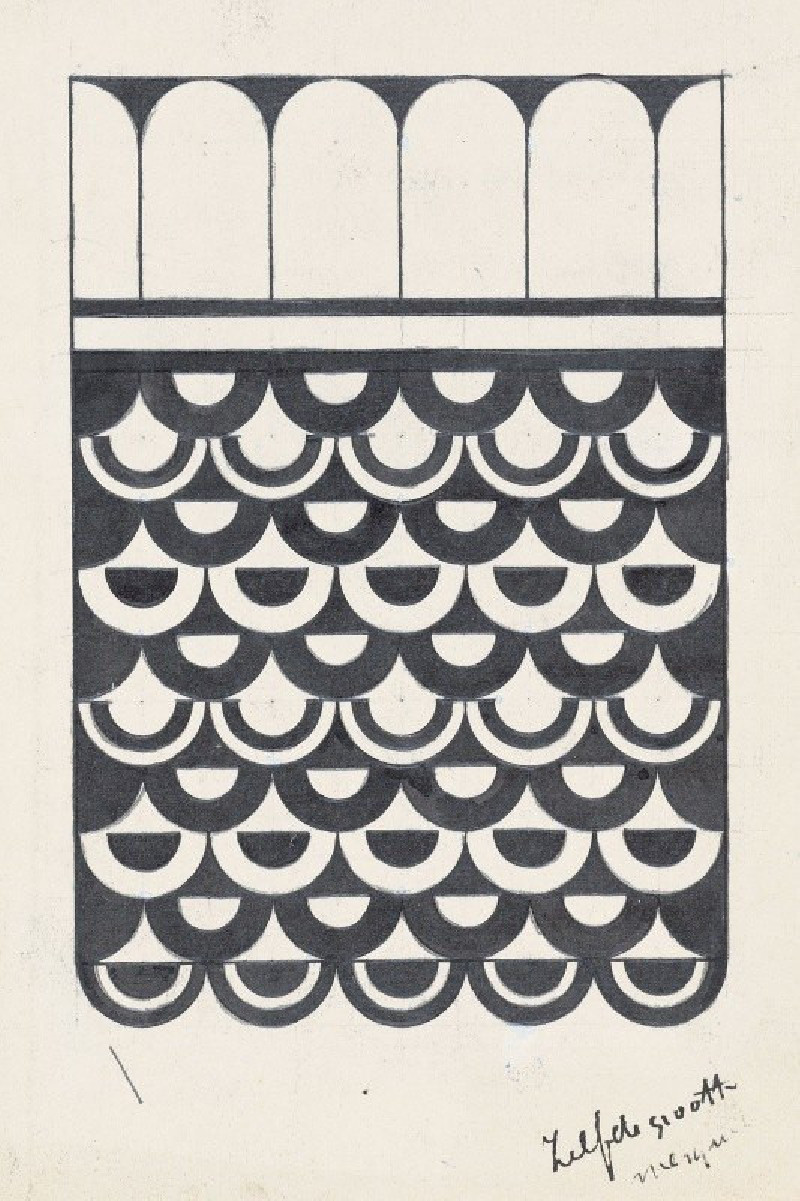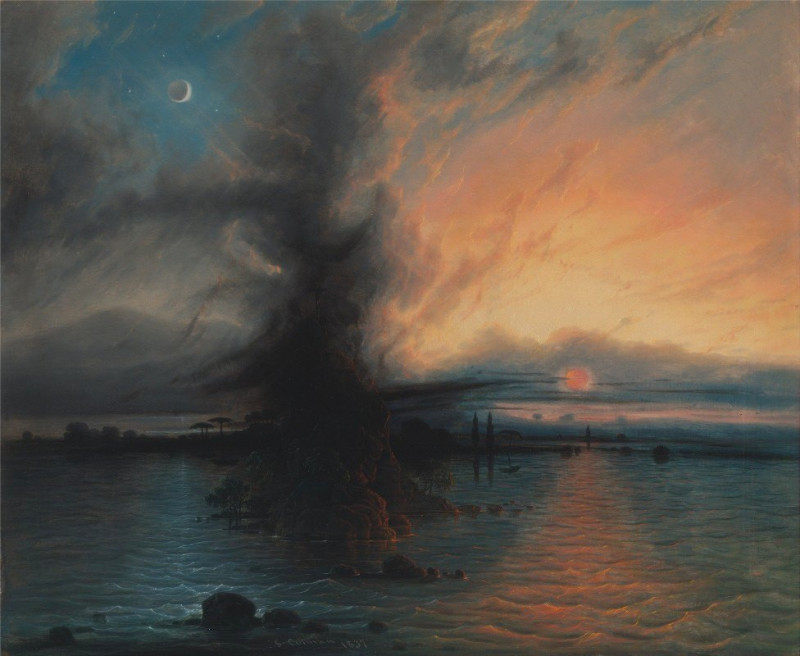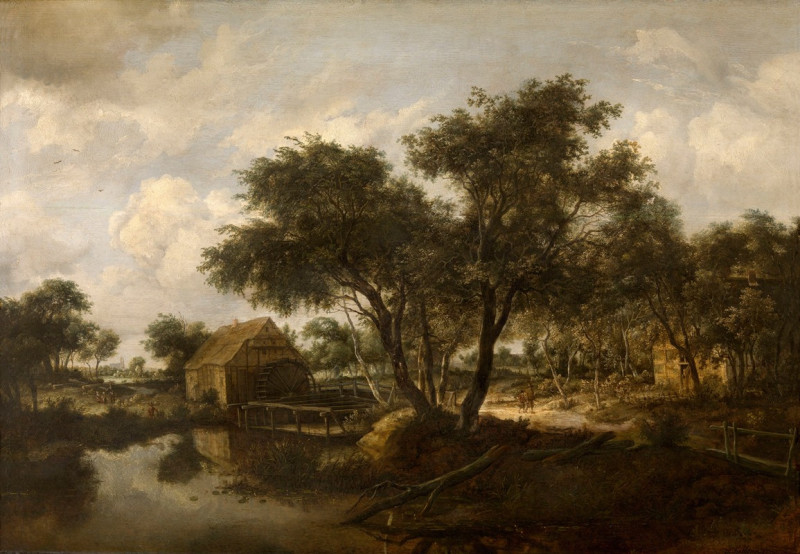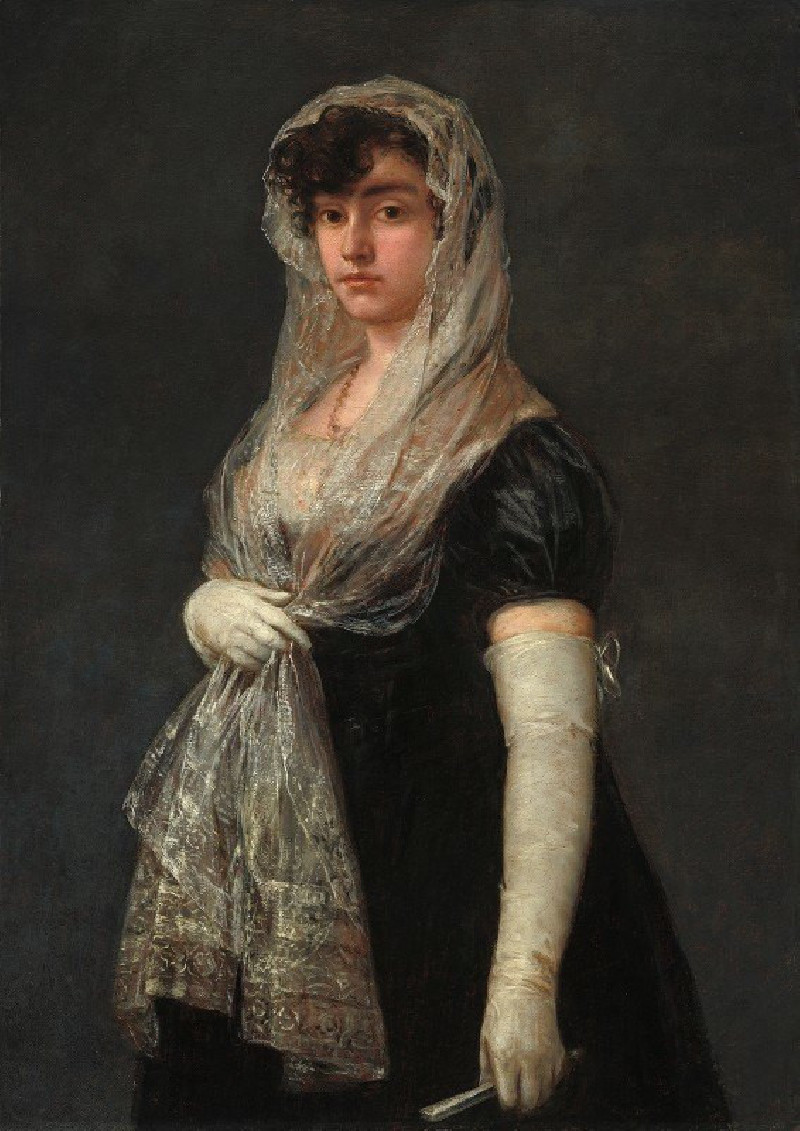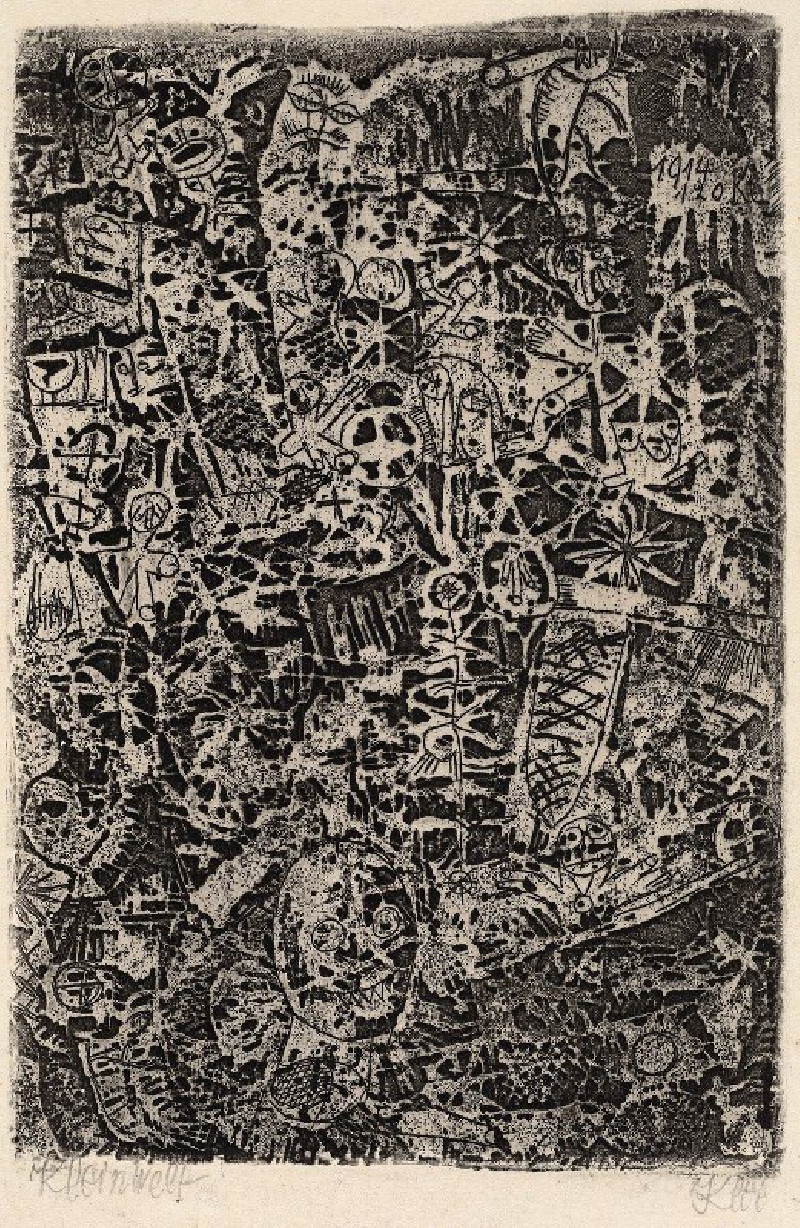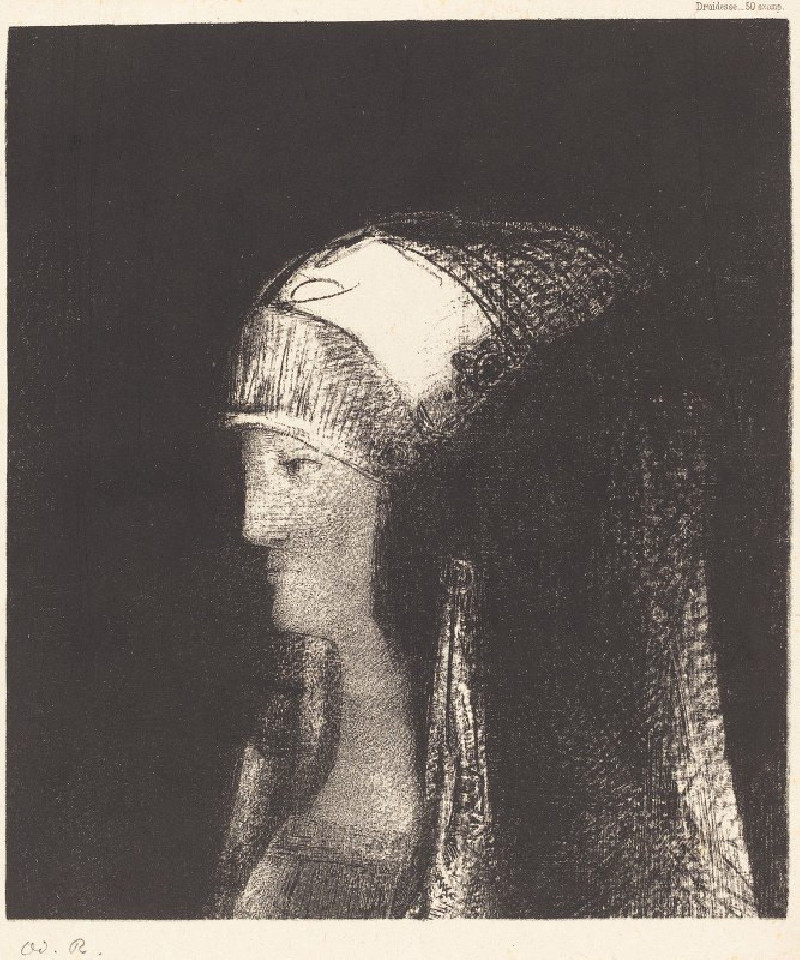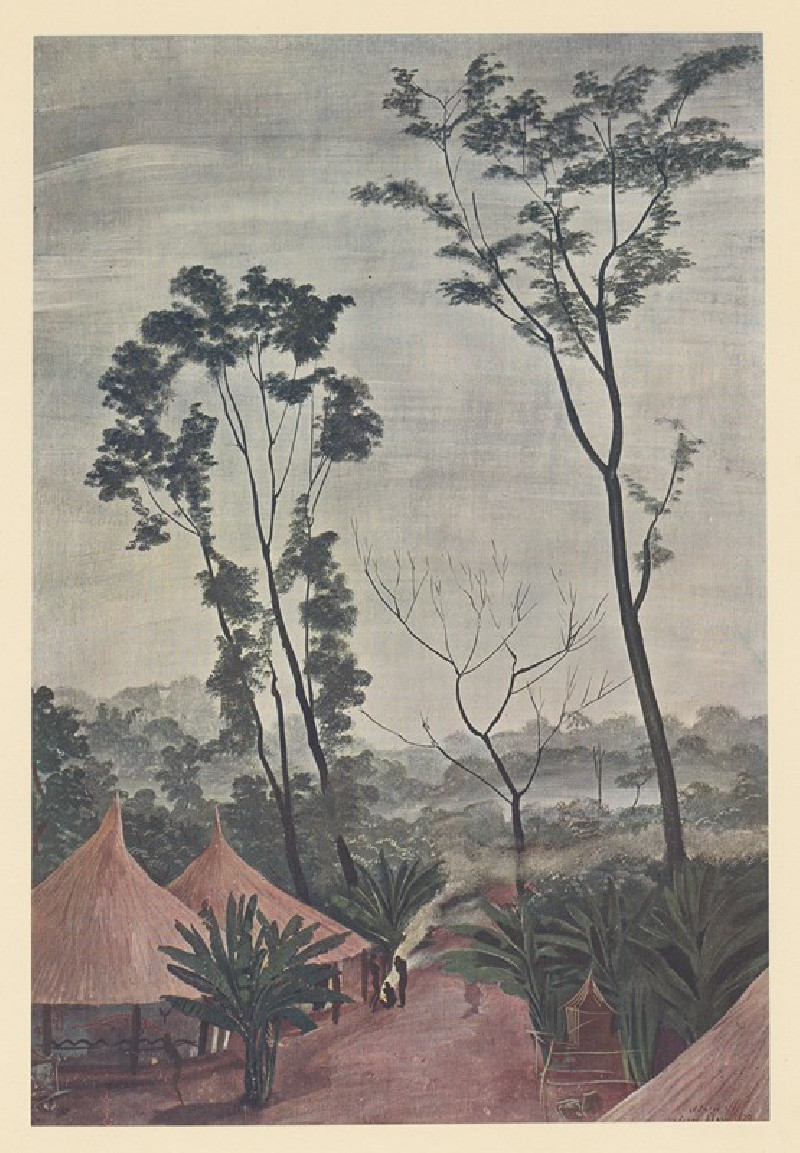Gevecht tussen gevleugelde kentaur en man
Technique: Giclée quality print
Recommended by our customers
More about this artwork
Welcome to a glimpse into Johannes Josephus Aarts' dynamic and mythological artwork titled "Gevecht tussen gevleugelde kentaur en man" (Battle between a Winged Centaur and a Man). This charcoal sketch, marked by its expressive and vigorous lines, captures an intense moment of combat between two mythical figures.At the heart of this powerful drawing, a winged centaur – a mythical creature that is part human, part horse, and in this instance, equipped with grand wings – is depicted in a fierce struggle with a man. The centaur is shown using its might and unique form, combining the strength of its equine body with the agility and flight capability of its wings. In contrast, the man confronts this formidable opponent with sheer human determination and physical effort.The motion and emotion are vividly portrayed through Aarts' masterful use of shading and strong strokes, creating a sense of depth and movement that pulls the viewer into the heat of the battle. The positioning of the characters against a nondescript, dark background enhances their dramatic interaction, focusing all attention on their dynamic forms and the physicality of their confrontation.This artwork not only reflects Aarts’ skill with charcoal but also his interest in traditional themes of heroism, mythology, and the eternal struggle between man and beast. It invites viewers to ponder on larger themes of conflict, power, and the human spirit's resilience.
Delivery
Returns
Johannes Josephus Aarts was a Dutch painter, illustrator, lithographer, engraver, etcher, writer, academic teacher and director, lecturer, sculptor and book-cover designer.
Jan Aarts received training in the Royal Academy of Art, The Hague. He was active there until 1911, and in Amsterdam from 1911 to 1934. Initially, until around 1900, Aarts worked above all on engravings. Thereafter he began to also use other graphic methods. In his work, one found depictions of farmworkers, dyke workers and later also tramps, beggars and invalids. Between 1920 and 1930 he produced mostly visionary work with apocalyptic scenes.



